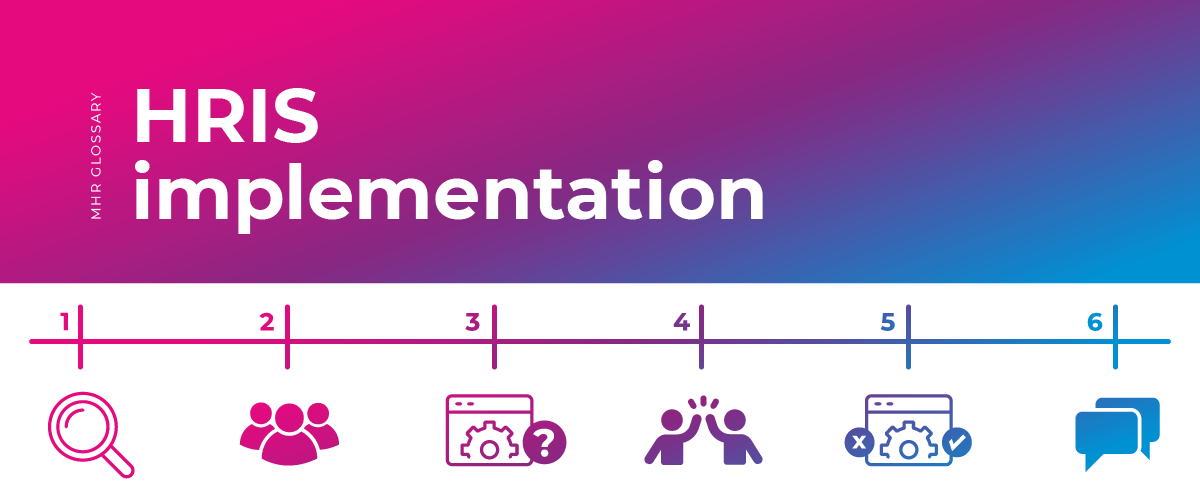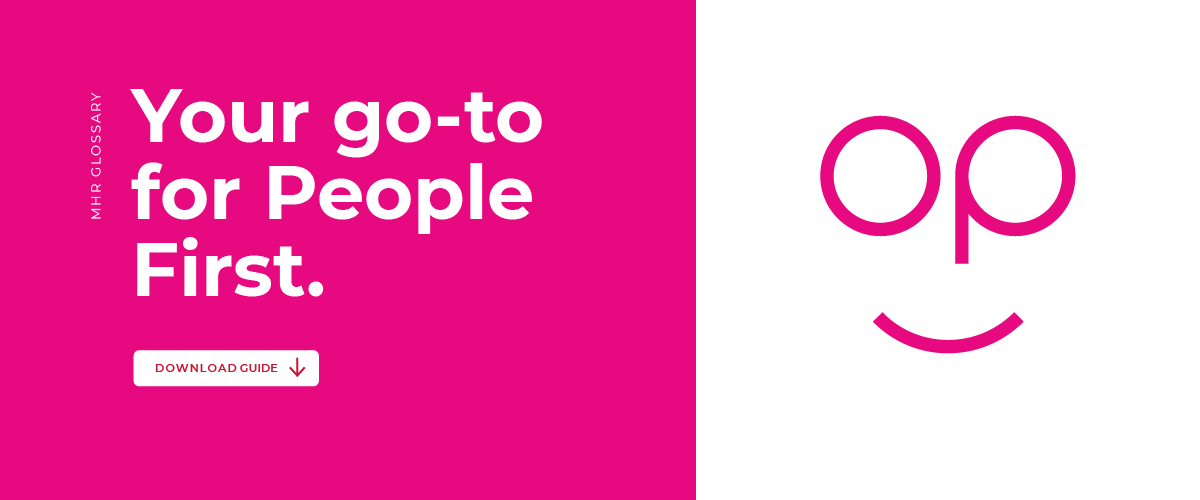HRIS vs HRMS vs HCM
Some people like to use the terms HRIS, HRMS and HCM interchangeably. While there is crossover, they actually mean slightly different things.
- HRIS: Human resource information systems
- HCM: Human capital management
- HRMS: Human resource management system
Each acronym refers to a software which will operate and streamline the many functions of your HR department. AN HRIS is a database for storing employee information, usually with some form of HR self-service functionality, that allows employees to have ownership over that data.
If you need your system to do more, an HCM or HRMS might be more appropriate. Fundamentally, they operate under similar principles, it’s just HCMs and HRMS’ tend to go into more depth and offer more features. HCMs in particular are the most complex kind of software, as they often bring in tools that are designed to support the entire employee lifecycle.
As the technology develops, the lines between the three acronyms are starting to blur. You may see people referring to something as an HRIS, but it will have HCM features. This effectively means that you need to instead look into what a product is offering and independently conclude if it suits your needs.
For the rest of this glossary, we’ll be using HRIS to refer to any HR system that allows for more effective management of your people and their data.
The exact features your HRIS needs will depend on how your organization works, but broadly speaking they’ll feature the following:
- Workforce management features (such as work scheduling)
- Recruitment and retention (which can include talent management)
- Compensation (Which includes pay and non-pay related benefits)
- Training
- Employee self-service (for things like PTO)
- Preboarding, onboarding and offboarding
Different sectors might have different requirements, but these broad strokes should suit just about anyone. From this basis, you can build out an HRIS system that works for you.
There are several benefits to investing in HRIS systems. This includes:
- Improved automation features to maximize workflow efficiency
- A more accessible one-stop shop for all your HR data, creating a more holistic picture
- A centralized platform that enables remote or hybrid teams to work consistently
- Improved recruitment processes thanks to streamlined
HRIS Implementation
While there are many different HRIS systems out there, most of them will be implemented in a similar way. Following these steps will ensure that yours is successful, and that you follow best practice.
Do your research and build a plan
What problems are you currently facing? How would an HRIS fix them? What are the expected costs and ROI of the project? This will help you figure out exactly what you need from an HRIS, which will enable you to research the market more efficiently.
Once you have your plan in face, you can start building a business case, which will help get senior stakeholders on board. This will ensure the company as a whole is more receptive to the change.
Assemble your team
Who’s going to be using the software? Who’s going to be the people fixing it if something goes wrong? You should create a dedicated team of HR, IT and other professionals from across the organization to help with implementation. Get their takes on what they need to do their jobs most effectively.
Pick the right HRIS software
There are plenty of different HRIS systems out there but finding the right one can be strenuous. Consider the size of your organization (and that includes your growth ambitions), your budget and any unique needs you have to deal with in your industry.,
Remember: you probably won’t find a HRIS platform that perfectly aligns with all your current processes. To a certain extent, you need to be prepared to adapt what you do to the new system, or else there’s not a lot of point in moving.
Build excitement
You can have a fantastic solution ready to go, but if none of your employees know how it works, they’ll avoid using it. Talk to them about the new system, show them how it will solve a lot of their problems, and designate some software ‘champions’ among different teams to have them spread knowledge among the rest of the organization.
Test, test and test again
As you’re working on implementation, you should be testing as often as possible.
There are two main kinds of testing to consider. Configuration, which is where you ensure all your data has been imported correctly. The other is functionality, where you test how your processes work as expected.
Check back in
HR standards are shifting constantly, and what works fantastically one day may not be as useful the next. You can’t just set and forget your HRIS and forget it, you need to check in with your employees and make sure it’s useful to them.

HRIS Implementation
Now we’ve talked about the technicalities of an HRIS, lets dig a little deeper into the benefits you can expect.
Streamlining HR processes and improving efficiency
Many HR professionals are used to dealing with mountains of paperwork, which often leaves them struggling to find time for more strategic tasks. An HRIS automates a huge amount of that work, without compromising on the effectiveness of each task. That gives HR more access to the big picture, instead of having them sweating over the small stuff.
Enhancing data accuracy and reporting capabilities
Any HRIS should bring all your employee data together into one place, which means making accurate decisions that are fully data-driven is much easier. You don’t have to make a reasonable ‘best guess’. You can clearly see exactly what you’re dealing with and drive a more effective strategy as a result. Plus, with enhanced reporting capabilities, you can show your work to the rest of the organization.
A better experience for your employees
Every employee will need to ask HR something at some point in their time with you, and for the most part this will be minor administrative tasks like booking leave, adjusting their details, or checking their work perks and salary. HRIS’ make it so this information is easily accessible at a glance, without having to involve an HR manager at all. This small change can lead to huge boosts in employee satisfaction.

HRIS Security and Compliance
HR teams deal with some of the most sensitive data imaginable. You have every employee’s age, address, contact details and banking information on file. Without due care, a lot of harm can be done to your employees and your reputation. As a result, one of the most important factors to consider when selecting an HRIS is ensuring data security and protecting sensitive employee information is considered.
The following data protection methods are particularly important:
- Multi-factor authentication (MFA) to securely verify user identities
- Data encryption, ensuing sensitive data remains protected even in the event of a breach
- Access controls, so only the most relevant people have access to specific data
- Robust password policies, which will ensure employees follow best practice
Likewise, you should ensure it’s easy to roll out updates to the system to ensure it’s complying with data privacy regulations and industry standards. Cloud-based systems are typically the best at this.
When choosing your HRIS system provider, take a look at their security certifications. They should also have a track record of good security practices, with effective responses to any breaches. Data incidents do happen, and they’re not always a sign that a company cannot be trusted- but how they dealt with the issue is an important thing to consider.
Future of HRIS
There are a number of emerging trends and advancements in HRIS technology that it’s really important to be aware of, with the most important of all being the impact of AI. You can expect to see AI being leveraged to spot trends in employee data, uncover flight risks and even offer guidance on personal development opportunities.
Automation will also take more of a front row seat, with compliance in particular being revolutionized by this feature. For example, automation enables compliance tasks to be scheduled, with alerts to designated people.
If you want to prepare for the future of HRIS in a rapidly evolving digital landscape, why not book a demo of People First, one of the most revolutionary HR systems in the market?
Why DEI needs to be the centrepiece of your HR and business strategy
Diversity, equity and inclusion (DEI) has fast become a priority for U.S. businesses of all types and sizes. It’s not only the right thing to do in ensuring equal opportunities for all employees, regardless of race, gender, sexual orientation, age or physical ability, but there are also compelling business reasons to invest in – and promote – such a strategy.
Boosted benefits
A more diverse workforce will bring with it a greater range of views, experiences and perspectives, which can encourage innovation and fresh approaches. This is particularly the case when this is reflected in senior leadership positions. It also means some organizations will be more representative of their customer bases, helping to ensure they can meet their expectations.
From an HR perspective, a more diverse workforce can help with both recruitment and retention, as individuals will feel more included and know they are joining an organization that doesn’t discriminate. In turn, this can create a broader talent pool and stronger employer brand, ultimately boosting the company’s wider reputation.
There can also be significant productivity benefits. Organizations with more diverse and equitable cultures tend to be more welcoming and positive, so there are fewer disagreements and less risk of toxic cultures developing. It’s well known that happier workers are more productive, with one study by Forbes finding that happy employees are 20% more productive than unhappy employees.
Beating burnout
A more positive and inclusive workplace can filter through into better mental health amongst employees. According to our research, more than half (55%) of employees feel there is no one at work they can turn to if they are experiencing burnout. Just one in five (18%) would feel comfortable going to their line manager and only 7% would approach HR.
This causes its own problems; a lack of support from employers is perceived to be the leading cause of burnout, reported by 49% of employees. A more diverse workforce would give people greater confidence in sharing any issues they may have, particularly if employees feel represented by those in HR and senior leadership roles, and therefore are more likely to be able to relate to their specific challenges. This in turn can create an open-door culture where people are more willing to seek out the support they need before it translates into burnout or becomes a bigger issue.
Measurement and evaluations
Understanding if employees are reaping the full benefits of DEI initiatives, however, is not easy. Whilst surveys can be a useful tool to understand employee attitudes, our recent Employee Experience report suggests that only one in four employers (25%) regularly run employee satisfaction surveys and, even when they do, 40% fail to make them anonymous, meaning respondents are less likely to give honest feedback. As a result, many organizations are not taking the time to accurately assess whether their DE&I policies are cutting through effectively throughout the workplace, which can negatively impact trust between employer and employee.
To combat this, technology can help by automating time-consuming manual reporting and analysis processes; 35% of organizations say they would run more employee satisfaction surveys if analysis and reporting functionalities were built into the system. Conducting regular surveys can ensure HR departments have an initial benchmark to show how well or otherwise they are doing around DEI, as well as other metrics. Over time, improvements and performance can be monitored and evaluated using data analytics, ensuring action can be taken if progress stalls.
There are other measures organizations must take to boost DEI, too. Establishing channels for employees to raise concerns or highlight potential issues is essential, and will help people feel there is somewhere to go if they can see something isn’t right.
Businesses must also take care to create equitable performance management processes. This means detecting any biases that may be present, whether conscious or otherwise. This is particularly the case with the rise of artificial intelligence, which raises the potential for such discrimination to be built into decision-making algorithms which could be used to make recruitment, promotion or pay decisions. Involving a diverse and representative mix of employees in the design of any system and road-testing it to detect any suspicious results can help to overcome this threat, and generate confidence in processes. Taking a few simple steps now to embed DEI in your organization can deliver significant improvements, not only creating a fairer and more egalitarian workforce but one that is more engaged, productive and loyal.



